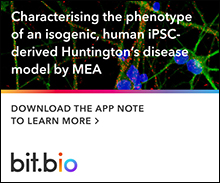

Currently, no effective cure or treatment for Huntington’s disease exists. To accelerate Huntington’s disease research and drug discovery, researchers need access to physiologically relevant human disease models that recapitulate patient phenotypes, in combination with more advanced methods to understand the underlying mechanisms of the disease.
In this App Note you will learn:
Brought to you by
